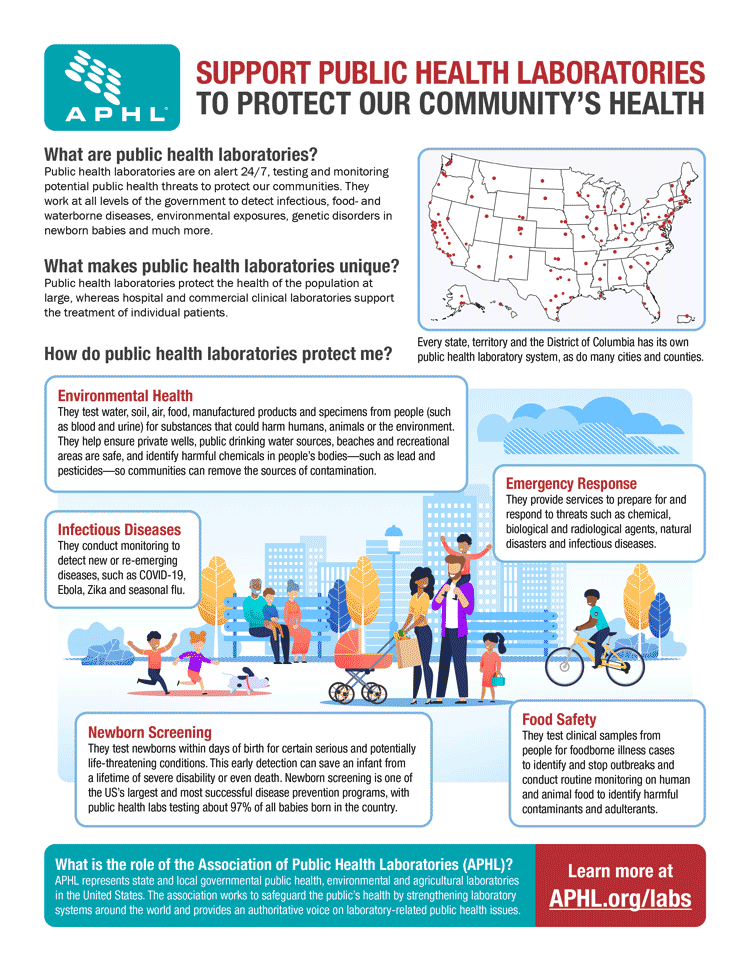What is a Public Health Laboratory?
What are public health laboratories?
Public health laboratories are on alert 24/7, testing and monitoring potential public health threats to protect our communities. They work at all levels of the government to detect infectious, food- and waterborne diseases, environmental exposures, genetic disorders in newborn babies and much more.
What makes public health laboratories unique?
Public health laboratories protect the health of the population at large, whereas hospital and commercial clinical laboratories support the treatment of individual patients.
How do public health laboratories protect me?
Environmental Health — They test water, soil, air, food, manufactured products and specimens from people (such as blood and urine) for substances that could harm humans, animals or the environment. They help ensure private wells, public drinking water sources, beaches and recreational areas are safe, and identify harmful chemicals in people’s bodies (such as lead and pesticides) so communities can remove the sources of contamination.
Infectious Diseases — They conduct monitoring to detect new or re-emerging diseases, such as COVID-19, Ebola, Zika and seasonal flu.
Emergency Response — They provide services to prepare for and respond to threats such as chemical, biological and radiological agents, natural disasters and infectious diseases.
Newborn Screening — They test within days of birth for certain serious and potentially life-threatening conditions. This early detection can save an infant from a lifetime of severe disability or even death. Newborn screening is one of the US’s largest and most successful disease prevention programs, with public health labs testing about 97% of all babies born in the country.
Food Safety — They test clinical samples from people for foodborne illness cases to identify and stop outbreaks and conduct routine monitoring on human and animal food to identify harmful contaminants and adulterants.
Updated on: April 22, 2022

